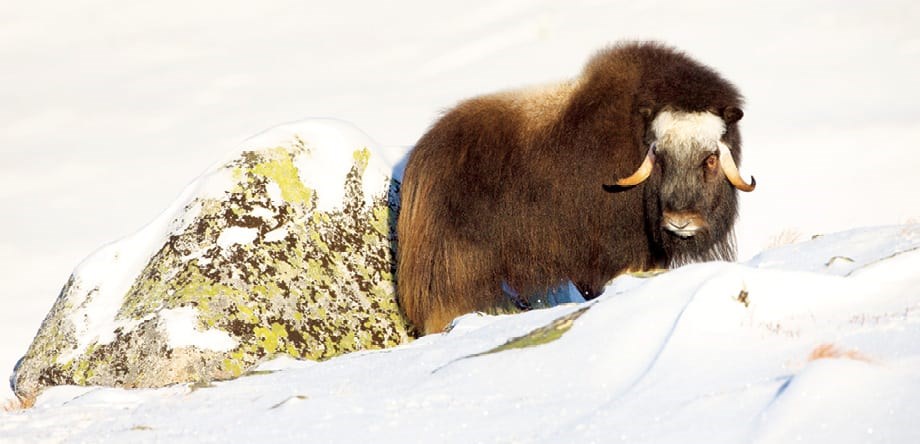Alone across Canada’s arctic
BY ADAM SHOALTS Special to the VOICE
Around 2:30 a.m. I awoke to the sound of snapping branches. Something was out there, moving through the spruces. Rather than remain silent and still, as instinct might suggest, I yelled, “Hey, hey, hey!” in a deep voice. As I did I sprang from my sleeping bag, grabbed my knife and bear spray, and unzipped the tent’s door on the side nearest the noise. In the eerie twilight gloom of the arctic summer night, I saw through the dead spruces something moving—a huge grizzly thirty feet off.
 Then as my eyes focused I realized it wasn’t a grizzly but something else entirely: a massive, prehistoric-looking creature—an arctic muskox, with huge curved horns. The great muskox, weighing half a ton, glared at me. My goodness, I thought, I’d almost rather it was a grizzly.
Then as my eyes focused I realized it wasn’t a grizzly but something else entirely: a massive, prehistoric-looking creature—an arctic muskox, with huge curved horns. The great muskox, weighing half a ton, glared at me. My goodness, I thought, I’d almost rather it was a grizzly.
I dropped my bear spray and instead grabbed my bear banger. Hurriedly, with the muskox staring at me, I fired a banger into the air. It launched up like a firework, exploding with a bang above the trees. The muskox, startled by the bang, paused for a moment, still looking at me, then galloped off, smashing and crashing through the fallen spruces as if they were mere matchsticks.
I waited until I could no longer hear the muskox anymore. Then I waited some more, casting glances every which way, trying to see through the ghostly grey spruces. Finally, when I’d convinced myself it was safe to do so, I climbed back into the tent and my sleeping bag.
I’d met with muskox before—strange and eerie-looking beasts, a sort of arctic bison—but only in the far north of the High Arctic. Up there on the windswept, desolate snows of the arctic islands, owing to the harsh conditions the muskox were smaller. I’d found them to be mostly gentle giants that left me alone as I camped and paddled along. But here along the Mackenzie, the more hospitable climate allowed the muskox to grow much larger. The big bull that had stirred me from my sleep was the largest I’d ever seen.
After a few more hours of uneasy sleep I was on my way. Leaving that spot among the bluffs, it was one campsite I’d be happy not to see again. Later that morning as I poled along I spotted another muskox half-hidden in some poplars; then, a few kilometres on, deposited on the mudbank was a muskox skull. My curiosity was such that I couldn’t help but stop to look at it. The enormous thing, horns and all, I estimated weighed fifty pounds! At the front of their skulls is a mass of hard bone, forming a kind of protective shield. The shield helps protect the males when they gallop and charge into each other, smashing their heads together with thunderous force. Such fierce contests are used to determine mating, sometimes inflicting severe and even fatal injuries on the losing muskox. ♦
Excerpted from Beyond the Trees: A Journey Alone Across Canada's Arctic, © Adam Shoalts, Penguin Random House Canada, 2019. Shoalts will read from his book at the community centre, on Thursday, Oct. 10, at 7 PM. Tickets available at the Pelham Library.



